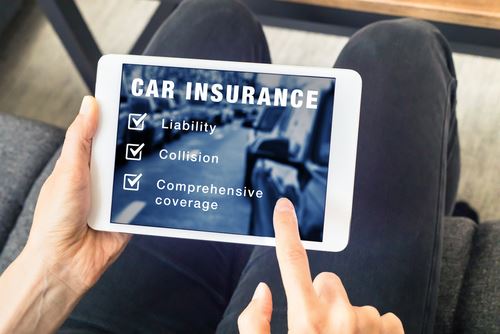This is the FOURTH in a series of blogs to explain automobile insurance coverage in a way that consumers can make informed decisions for their needs.
Comprehensive coverage pays for any kind of loss not covered under collision coverage. Windstorm/hail, fire, water/flood damage, vandalism, falling object (like a tree) hitting or being hit by a bird or animal and theft are examples comprehensive claims payable, less any deductible you may have.
The covered vehicle is the same as described in the prior Collision Coverage blog.
Once again, under the comprehensive coverage, your insurance policy language may allow your vehicle to be repaired using new, used, recycled and reconditioned parts. Some of these parts are made by manufactures other than the original equipment manufacturers (OEM), also known as after-market parts. The policy language may also allow the use of like kind and quality (LKQ) parts that have been harvested from salvage yards. Many object to the use of these parts. Unfortunately, the policy is a contract with terms you accepted when you paid your premium. Betterment, when items such as tires, batteries, etc. that have a measurable reduced life are replaced with a new one, may apply as well. Betterment may also apply to an all-over paint replacement when the original was faded or damaged. The principal of insurance is to restore your vehicle to pre-loss condition. If the repairs make you “better” than your vehicle was before, betterment is applied and you would have to pay the difference.
If your vehicle is stolen, your policy may provide coverage for a rental vehicle. If your vehicle is not recovered, the rental expense may be paid until the insurance company extends a reasonable offer to settle your total loss claim. If your vehicle is recovered, the rental expense may be paid until your vehicle is repaired.
If your vehicle is deemed to be a total loss, the insurance company should conduct a market study in your geographic area to determine the fair market value (FMV) immediately before the crash. FMV is the amount for which the same year, make, model, options, conditions and mileage would have sold. Factors such as sentimental value or routine repairs/maintenance do not increase the evaluation. Once a fair vehicle value is determined, sales tax and tag transfer fees will be added before the deductible is applied. If your vehicle is financed, the lien must be satisfied first. Any leftover equity will be paid to you.
If the damage or loss to your vehicle was caused by the negligence or actions of another, your insurance company may take steps to collect what they have paid as well as your deductible from that party. Examples of this include seeking restitution from a car thief or vandal. Also, defective vehicle and part manufacturers may be pursued to reimburse your insurance company and you for any expense paid.


